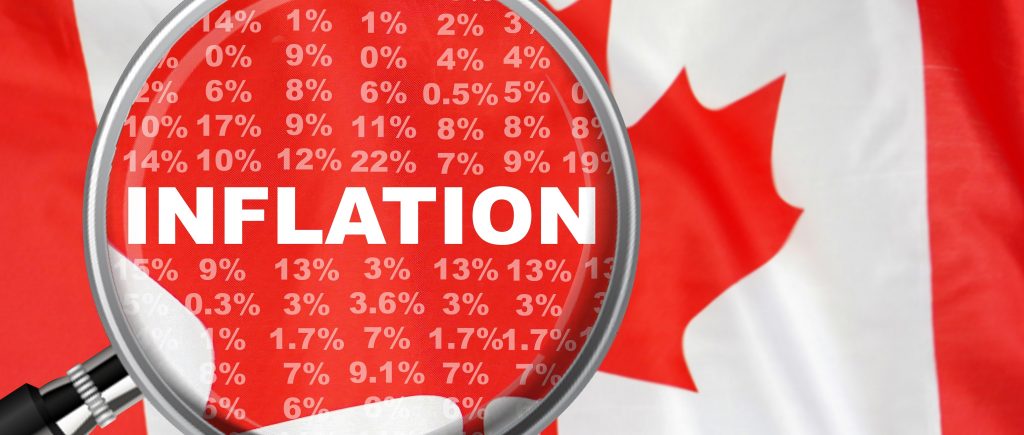The Canadian dollar has been under scrutiny recently as investors closely monitor economic data and central bank statements. Here’s a breakdown of the recent developments and their impact on the CAD as the USD/CAD pair is 0.20% up trading at 1.3651 at the time of writing.
Inflation Data, Rate Cut Bets
Canadian CPI Eases: Canada’s annual inflation rate cooled to 2.7% in April, down from 2.9% in March. This decline was driven by slower growth in prices for food, services, and durable goods1. Additionally, other measures of consumer inflation, such as Median CPI (2.6%), Common CPI (2.6%), and Core CPI (1.6%), were all lower than expected.
Bank of Canada’s June Cut: The softer inflation data has increased the odds that the BoC will start cutting interest rates in June. With inflation easing, the pressure is mounting for the BoC to take action2.
Bearish Channel:
USD/CAD is in a short-term bearish channel, supported by hawkish Fed comments. However, weakening US data suggests rate cuts may come sooner than expected. The ongoing risk rally against risk-sensitive currencies like the Canadian dollar suggests a potential drop, and the CAD may remain resilient despite slowed inflation.
Fed Versus BoC Divergence
The US Federal Reserve is hawkish about early rate cuts and urging for more inflation data before easing policy. The Canadian Bank of Canada (BoC) faces a delicate balancing act, with recent Canadian data showing robust job and wage growth, but potential rate cuts may be cautious and gradual. The Canadian dollar’s recent performance is influenced by inflation easing, potential BoC rate cuts, and global market dynamics. Investors should stay vigilant as further developments could shape the currency’s trajectory.
The Canadian dollar’s future hinges on the BoC’s June decision, with inflation cooling and rate cut expectations increasing. Traders should closely monitor economic indicators and central bank communications to navigate the currency markets effectively. The expected performance of the Canadian dollar in the second half of 2024 is uncertain.
Mixed Economic Outlook:
The Canadian economy is influenced by factors like inflation, interest rates, and commodity prices. Despite a sharp decrease in inflation in both Canada and the US, commodity prices, including oil, have increased in the second half of 2023, benefiting the Canadian dollar.
Interest Rate Policies:
Both the Bank of Canada (BoC) and the Federal Reserve have been adjusting interest rates. In March 2022, they began hiking rates, coinciding with a peak in oil prices. The BoC’s decisions regarding rate cuts or further adjustments will significantly impact the CAD’s performance.
Trade Relationships and Global Sentiments:
Trade tensions between the US and its key partners, primarily China, have influenced the USD/CAD exchange rate in the past. Changing market sentiments about the pace of economic recovery and fluctuating oil prices have also affected the CAD.
Forecasts and Projections:
Analysts from various institutions have different views: CIBC Capital Markets revised their year-end forecast for USD/CAD in 2024 to 1.31, signaling a stronger US dollar against the Canadian dollar. However, they express optimism for the CAD in 20252.
Other forecasts suggest a range of fluctuations, with the pair potentially moving between 1.31 and 1.35 CAD on average in 2024. Wells Fargo predicts a 5% appreciation of the CAD by the end of 2024, with USD/CAD down from 1.32 to 1.264.
Global Economic Conditions:
The US economy is expected to experience moderate growth, with real GDP projected to increase by 2.6% in 2024 and slightly decrease to 1.8% in 2025. The Canadian economy’s performance is closely linked to global economic conditions, including recovery from the pandemic and commodity demand. Monitoring interest rate decisions, inflation trends, and global economic developments is crucial for understanding the CAD’s performance in the second half of 2024.

 Noor Trends News, Technical Analysis, Educational Tools and Recommendations
Noor Trends News, Technical Analysis, Educational Tools and Recommendations




